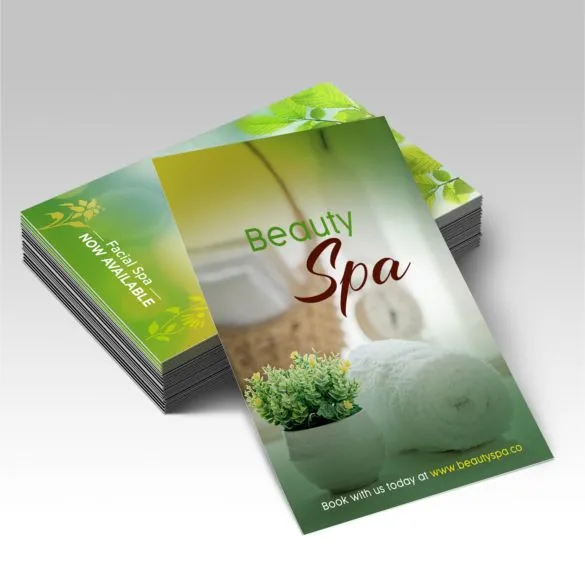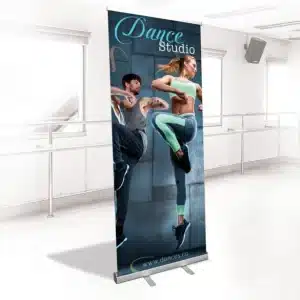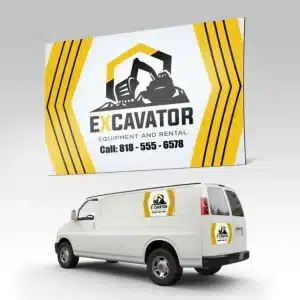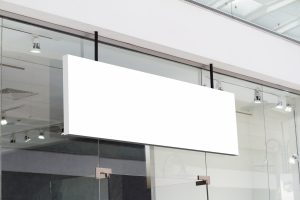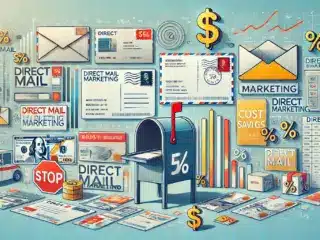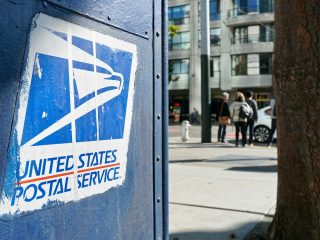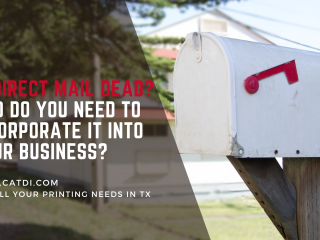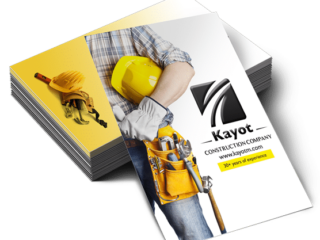Last Updated on April 15, 2024 by Carlos Alonso
Discover the Top 5 Benefits of Aqueous Coated Postcards for Your Business Success
Aqueous coating is a water-based coating applied to printed materials, providing a smooth, glossy finish. It differs from other types of coatings, such as UV coatings and varnish coatings, in its application process and composition. Aqueous coatings offer several advantages over other types of coatings, including being more environmentally friendly and cost-effective. Using aqueous coating on postcards can greatly enhance their appearance and quality by providing a glossy finish, better protection against wear and tear, improved print quality, and a more tactile experience.
What is an Aqueous Coating and How Does it Differ from Other Types of Coatings?
Definition of Aqueous Coating
Aqueous coating is a water-based coating applied to printed materials, such as postcards. It is made up of a mixture of acrylic emulsion, water, and other additives. The coating is applied to the surface of the paper or cardstock using a roller or spray nozzle. Once applied, the coating dries quickly to form a smooth, glossy finish.
Differences from Other Types of Coatings
Aqueous coatings differ from other types of coatings in several ways. For instance:
- UV coatings are cured by ultraviolet light while aqueous coatings dry through evaporation.
- Varnish coatings are oil-based while aqueous coatings are water-based.
- Lamination involves applying a thin plastic film to printed materials while aqueous coating creates a glossy finish directly on the paper or cardstock surface.
Overall, aqueous coatings offer several advantages over other types of coatings. They are more environmentally friendly, cost-effective, and provide excellent durability and protection for printed materials.
Enhancing Postcard Appearance with Aqueous Coating
Benefits of Using Aqueous Coating on Postcards
Aqueous coating can greatly enhance the appearance and quality of postcards. Here are some benefits:
- A glossy finish that makes images pop: The smooth and even finish provided by an aqueous coat gives postcards a professional look that catches people’s attention.
- Better protection against wear and tear: The coating provides an extra layer of protection against scratches, smudges, fading, and moisture damage, which can extend the life of postcards.
- Improved print quality: Aqueous coating helps to prevent ink from smudging or bleeding, resulting in sharper and more vibrant images and text.
- A more tactile experience: The coating creates a smooth texture that feels good to touch, making postcards more appealing to recipients.
Design Considerations for Aqueous Coated Postcards
When designing postcards with aqueous coating, there are some considerations to keep in mind:
- Choose high-resolution images: The glossy finish of the coating can highlight any imperfections in low-quality images. Therefore, it’s important to use high-resolution images that will look sharp and clear when printed.
- Use contrasting colors: The coating tends to make colors appear darker and richer. Therefore, it’s best to use contrasting colors that will stand out and grab attention.
- Avoid large areas of solid ink coverage: Aqueous coatings tend to cause ink to pool together, which can result in uneven coverage or streaks. Therefore, it’s best to avoid large areas of solid ink coverage on aqueous coated postcards.
The Benefits of Using Aqueous Coated Postcards for Marketing
Increase Brand Visibility
Postcards are a great way to increase brand visibility and awareness. With an aqueous coating applied, they become even more effective at catching people’s attention. The glossy finish makes them stand out from other mail items and encourages recipients to take a closer look.
Better Response Rates
Aqueous coated postcards have been shown to have higher response rates than non-coated ones. This is because the glossy finish creates a more professional appearance that instills trust and credibility in recipients. Additionally, the coating helps to protect postcards from damage during transit, ensuring they arrive in good condition.
Cost-Effective Marketing Tool
Postcards are a cost-effective marketing tool that can be used to reach a large audience without breaking the bank. Aqueous coated postcards offer even more value for money because they provide better protection and durability than non-coated ones, which means they can be used multiple times.
Environmental Advantages of Aqueous Coated Postcards
Water-Based and Non-Toxic
Aqueous coatings are water-based and do not contain any harmful chemicals or solvents. This makes them a safer and more environmentally friendly option compared to other types of coatings that use oil-based or solvent-based materials.
Recyclable and Biodegradable
Postcards with aqueous coatings are fully recyclable and biodegradable. The coating does not affect the paper or cardstock’s ability to decompose naturally, which means they can be disposed of responsibly without harming the environment.
Reduced Carbon Footprint
The manufacturing process for aqueous coatings produces fewer greenhouse gas emissions compared to other types of coatings. This means that using aqueous coated postcards can help reduce your carbon footprint and contribute to a more sustainable future.
Durability and Longevity of Aqueous Coating on Postcards
Protection Against Wear and Tear
Aqueous coating provides an extra layer of protection against wear and tear, making postcards more durable. The coating helps prevent scratches, smudges, fading, moisture damage, and other types of wear that can occur during transit or handling.
Longer Shelf Life
Postcards with aqueous coating have a longer shelf life than non-coated ones. The coating helps to preserve the print quality and prevents the ink from fading over time. This means that postcards can be stored for longer periods without losing their visual appeal.
Resistance to Water and Moisture
Aqueous coatings are resistant to water and moisture, which makes them ideal for postcards that will be exposed to these elements during transit or storage. The coating helps to prevent water damage, smudging, and bleeding of ink, ensuring that postcards remain in good condition.
Customizing Designs and Images on Aqueous Coated Postcards
Spot vs Flood Coating
When designing postcards with aqueous coating, there are two options available: spot coating and flood coating.
Spot coating involves applying the coating only to specific areas of the postcard, such as images or text. This creates a contrast between the coated and uncoated areas, resulting in a unique visual effect.
Flood coating involves applying the coating evenly across the entire surface of the postcard. This creates a smooth and glossy finish that covers the entire card.
Special Effects with Aqueous Coating
Aqueous coatings can also be used to create special effects on postcards. For instance:
- Glossy or matte finishes: Depending on the desired effect, aqueous coatings can be applied to create either a glossy or matte finish.
- Metallic finishes: Special additives can be added to aqueous coatings to create metallic finishes that give postcards a shiny or reflective appearance.
- Embossing or debossing: Aqueous coatings can be used in conjunction with embossing or debossing techniques to create raised or recessed patterns on postcards.
The Printing Process for Aqueous Coated Postcards
Offset Printing vs Digital Printing
Aqueous coatings can be applied using either offset printing or digital printing methods.
Offset printing involves transferring ink from a plate onto a rubber blanket, which then transfers the image onto paper or cardstock. The aqueous coating is applied after the ink has dried.
Digital printing involves creating an image directly on the paper or cardstock using a digital printer. The aqueous coating is applied after the image has been printed.
Pre-Press Considerations
When preparing postcards for printing with aqueous coatings, there are some pre-press considerations to keep in mind:
- Bleed and trim: Ensure that your design includes a bleed area and trim marks to ensure that the final product is trimmed correctly.
- Color calibration: Make sure that your images are properly calibrated for color accuracy and consistency across different printing runs.
- Coating compatibility: Check with your printer to ensure that the paper or cardstock you have chosen is compatible with aqueous coatings.
Industries that Benefit Most from Using Aqueous Coated Postcards in Marketing Campaigns
Retail Industry
The retail industry can benefit greatly from using aqueous coated postcards in marketing campaigns. The glossy finish of the coating makes products look more appealing and encourages customers to visit stores or make online purchases.
Tourism Industry
Postcards are a popular souvenir item for tourists, and aqueous coated ones can make them even more attractive. The coating provides better protection against damage during travel and can help preserve the memories of a trip.
Real Estate Industry
Aqueous coated postcards are an effective way for real estate agents to showcase their properties. The glossy finish makes images of homes look more professional and encourages potential buyers to schedule viewings.
In conclusion, aqueous coated postcards offer numerous benefits such as enhanced durability, better print quality, and resistance to smudging and fading. This makes them an ideal choice for businesses and individuals looking to create high-quality postcards that leave a lasting impression on their recipients.

